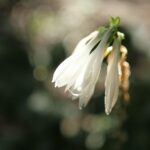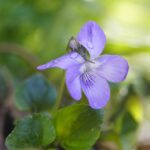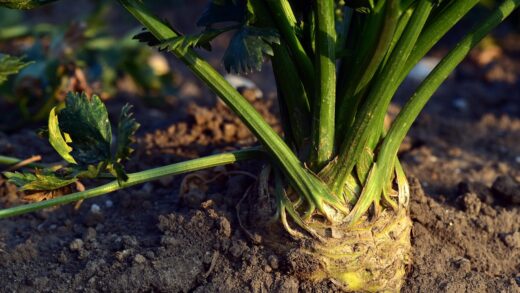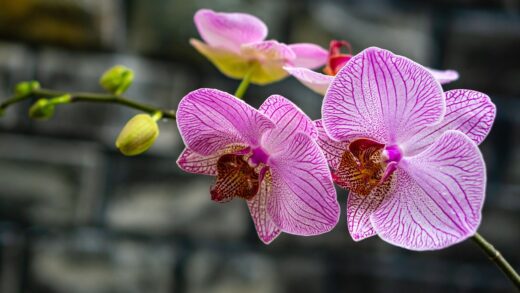Lavender is one of the most beloved Mediterranean plants, whose charm lies not only in its beautiful purple flowers but also in its unique scent and numerous beneficial effects. Cultivating this plant doesn’t require exceptional gardening skills, but it’s worth following some basic rules for successful growth. Selecting the right location, preparing the soil, and providing careful maintenance all contribute to its flourishing in your garden or on your terrace. By paying attention to these aspects, you can long enjoy the beauty and harmony that lavender provides.
Selecting the Planting Site and Preparing the Soil
The ideal planting location for lavender is a sunny, warm, and sheltered area. This plant belongs to sun-loving species, so an adequate amount of light is essential for its flowering and the development of its essential oil content. South-facing areas are the most suitable, where the plant can enjoy at least 6-8 hours of direct sunlight daily. Avoid shaded, humid spots, as these create unfavorable conditions for the development of fungal diseases.
The quality of the soil is fundamental to the development of lavender. This plant thrives in loose, well-drained, calcareous, and nutrient-poor soil. In the case of clay or heavy soil, it’s essential to improve the soil structure with sand or fine gravel to prevent root rot. The ideal soil pH value ranges between 6.5 and 8.0. If the soil is acidic, it’s a good idea to add lime to allow the plant to develop in optimal conditions.
Before planting, it’s worth thoroughly preparing the area. Clear it of weeds and unnecessary plant parts, then loosen the soil to a depth of at least 30-40 cm. If necessary, this is the time to mix in soil amendments, such as sand or compost, although overly nutrient-rich soil should be avoided. The goal of soil preparation is to ensure proper ventilation and drainage, which are essential for the healthy growth of lavender.
It’s important to water the plant regularly in the first few weeks after planting until its root system is established. As a mature plant, lavender tolerates drought well, so overwatering is the biggest mistake you can make. Standing water can cause serious damage to the roots, so it’s best to water after the soil has dried out and avoid wetting the leaves and flowers. Drip irrigation can be a good solution, as it delivers water directly to the roots.
Planting and Caring for Lavender
The best time to plant lavender is in the spring, after the danger of frost has passed. When buying seedlings, make sure to choose plants with healthy, strong root systems and fresh shoots. Planting distance is also crucial: leave enough space between the bushes, typically 30-40 cm, so the plants can get air and not compete for nutrients. When planting, carefully place the root ball in the dug hole, then firm the soil around it and water it thoroughly.
Pruning is one of the most important tasks in lavender care, as it helps maintain the plant’s shape and promotes abundant flowering. The first pruning should be done after flowering, when you remove the spent flower stalks to prevent them from taking energy from the plant. A more drastic, spring pruning removes old parts, rejuvenating the plant and stimulating new shoot growth. Never prune back into the woody parts, as they will not grow back.
Lavender is generally a low-maintenance plant, but proper nutrition can still be crucial, especially when it’s young. In early spring, it’s a good idea to give it a small dose of slow-release, potassium-rich fertilizer, but nitrogen-based products should be avoided. Excessive nitrogen stimulates leaf growth at the expense of flowering, and the plant can become more susceptible to diseases. A layer of mulch, such as gravel or crushed stone, helps retain soil moisture and suppresses weeds.
Winter protection for lavender is also important, especially for young plants and in colder climates. Its hardiness depends on the variety, but generally, lavender tolerates frost well. It’s a good idea to spread mulch, such as wood wool or leaves, around the base of the plant to protect the roots from hard frosts. Lavender grown in containers should be overwintered in a frost-free place, such as a garage or a conservatory.
Propagating Lavender from Seeds and Cuttings
Lavender can be propagated in several ways, but growing from seeds requires patience and attention. The germination of seeds is relatively slow and unreliable, so this method is recommended mainly for more experienced gardeners. It’s a good idea to sow the seeds in a mix of peat and sand, and then ensure a constant humidity level. After germination, the small seedlings need to be transplanted when they reach the right size and become strong enough. This method is slow but allows for the preservation of the plant’s genetic diversity.
Propagation by cuttings is the most common and effective method, where the new plant inherits the exact same properties as the parent plant. The best time for taking cuttings is late summer to early autumn. Choose a healthy, non-woody but well-established shoot without flowers. The ideal cutting length is 10-15 cm, and the leaves on the bottom part should be removed. You can significantly increase the chances of success by dipping the cuttings in rooting hormone and planting them in moist soil.
During the rooting of cuttings, the most important thing is to provide adequate humidity and temperature. Place the cuttings in loose, sandy soil, then cover them with a plastic bag or a glass jar to reduce evaporation. This “mini greenhouse” helps root formation. Regularly ventilate and moisten the soil to prevent mold and drying out. Root formation usually takes 4-6 weeks, after which the new plants can be transplanted to their permanent locations.
The advantage of propagating by cuttings is that new plants can be produced relatively quickly and in large quantities. With proper care and attention, most cuttings will successfully root and develop into full-fledged lavender bushes within a few years. It’s important to take special care of young plants in their first year, protecting them from winter frosts and ensuring proper watering so they can strengthen before they start to flower abundantly.
Protection against Diseases and Pests
Lavender is a relatively resilient plant, but certain diseases and pests can still pose a threat. The most common problems are fungal diseases, which develop as a result of excessive moisture and poor air circulation. Gray mold (Botrytis cinerea) and root rot are particularly common. You can prevent these problems by choosing the right planting location and soil, and by avoiding overwatering. Diseased parts should be immediately removed and destroyed to prevent the infection from spreading.
Pests can also appear on lavender, although rarely, with aphids and slugs being the most common. Aphids suck the plant’s sap, which can lead to distorted shoots and slowed growth. You can protect against them with insecticides or natural methods, such as nettle tea or neem oil. Slugs mainly like young, fresh shoots, so it’s a good idea to place slug traps or sprinkle slug repellent around the plant.
Prevention is the best defense against diseases and pests. Keeping the plant healthy is the most important thing. To do this, ensure it gets enough sunlight, has well-drained soil, and is planted with enough space for air circulation. Regular pruning also helps remove dead or diseased parts, making the plant stronger and more resilient. A healthy plant is less prone to infections and pest attacks.
If a problem does arise, it’s important to react quickly. Act at the first signs, and don’t wait for the infection to take hold. When using plant protection products, always follow the manufacturer’s instructions and consider environmental aspects. Lavender’s natural scent and essential oil also repel most pests, so the plant already has a kind of natural defense, which makes its care easier.
















